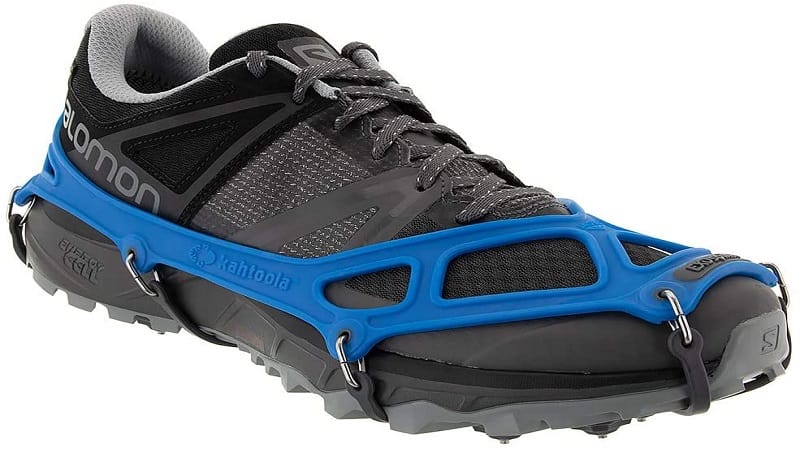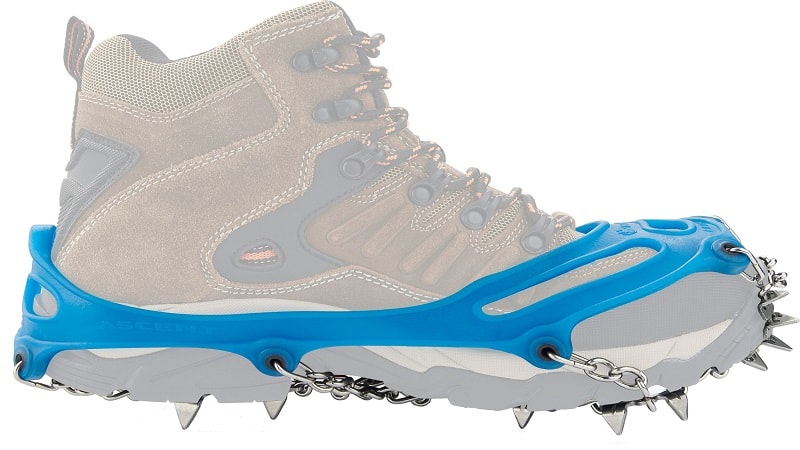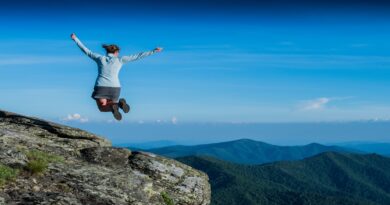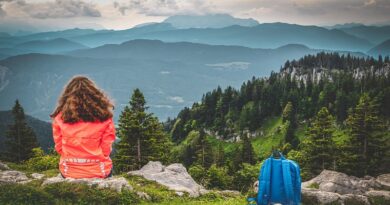Best Microspikes & Winter Traction Devices for Hiking
A friend of mine in Colorado texted me to tell me she’d gotten microspikes for hiking. They were a game changer for hiking in snow and icy terrain.
Fast forward to a recent hiking adventure at Grayson Highlands State Park. I was at a much higher elevation than at my home. Oh, there was ice and snow.
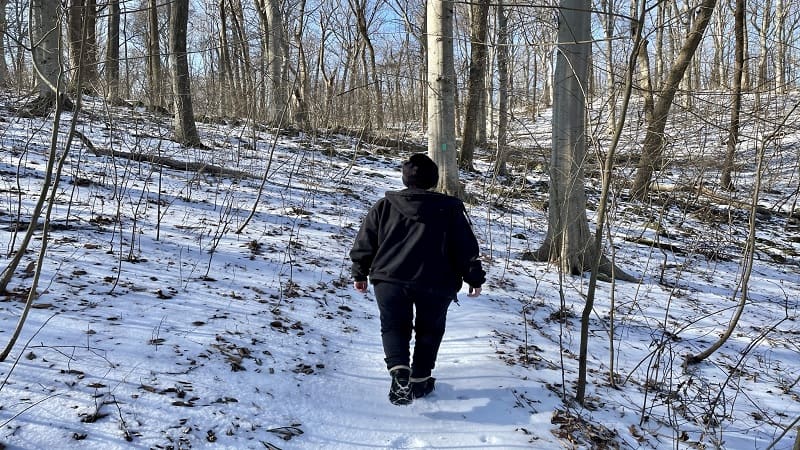
There may be affiliate links in this post. If you make a purchase, I earn a small commission at no extra cost to you. Thank you.
I was cursing myself as I cautiously hiked along the Appalachian Trail in Virginia to Wilburn Ridge – sans microspikes – slipping on ultra-slick icy patches.
The snow hiking season had only just begun and it was clear that microspikes would be in my future. Thankfully, they are fairly affordable.
Quick Picks: Microspikes
Are Microspikes Worth It?
To be honest, I’d never heard of microspikes, so I said, “You mean like Yaktrax?” I didn’t have a pair, but as a winter weather runner, I’d heard of this brand.
Essentially, microspikes provide extra traction when hiking on slippery surfaces, like snow and ice. They slip over your hiking boots or trail runners.
They reduce your chances of a spill while you are hiking or backpacking. Small spikes dig into snowy and icy trails as you hike to keep you upright.
Typically, microspikes have 12 spikes that are no more than .5 inches in length. They also come in different sizes based on the size of your hiking boots or shoes.
You can find a pair of spikes at various price points, depending on the brand and traction level. For peace of mind in winter months, they are worth the price.
Microspikes Vs. Crampons
A lot of people have heard of crampons. However, crampons may be more than you need. For starters, the larger spikes can be twice as long as on microspikes.
Crampons, like Hillsound Trail Crampons, generally have about 50 percent more spikes, too.
As in, closer to 20 rather than 12 that are more common on microspikes. These are fairly aggressive spikes designed to dig into icy terrain.
Crampons are best for technical terrain, like ice climbing or hiking steep slopes or icy grades. The long spikes are a good option with thick ice and hard surfaces.
Microspikes, meanwhile, are a best choice for the casual hiker on moderately icy or snowy trails. They also offer great traction and excellent grip on flat terrain.
They will provide excellent traction to safely complete winter hikes. Microspikes are lighter weight and a great option when you need traction in light snow.
Who Makes Microspikes?
There are two primary brands when it comes to microspikes: Yaktrax and Kahtoola. However, one search on Amazon may lead you to believe otherwise.
You’ll see loads of brands, but the majority of what you see are crampons. Not microspikes. You may also see them called ice cleats, snow grips or ice spikes.
While “microspikes” is the soon-to-be generic term for these slip-on soft adventure traction devices, you may see them from Kahtoola as EXOspikes or NANOspikes.
Both of these use more lightweight tungsten carbide rather than stainless steel for the ever-important spikes that keep you stable in winter conditions.
Best Microspikes for Hiking
Since my experience slip-sliding along the Appalachian Trail at Grayson Highlands State Park, I’ve spent a lot of time researching the best microspikes.
I should say I was researching the “best winter traction devices.” Kahtoola has owned the trademark for “microspikes” since 2008. Rather, MICROspikes.
For this reason, you won’t find a lot of brands touting their “microspikes,” so keep this in mind if you start hunting around for “snow spikes.”
Regardless of the name, know that spikes are best for icy conditions, not deep snow. These are not snow shoes. They provide extra grip on hard ice and snow.
Since few want to scroll through review after review, I’m going to share the three footwear traction devices that made my short list before I made my purchase.
Kahtoola MICROspikes
Honestly, you can’t go wrong with an original. The Kahtoola MICROspikes do what they need to do. That’s according to more than 2,200 five-star reviews on Amazon.
I’m wary of products with so many top ratings, but when you dive into the written reviews you can tell that this is a legitimately satisfied group of winter hikers.
As for product features, the length of the 12 stainless steel spikes are .375 inches. They are tough and well-made for ice, packed snow and wintry mix conditions.
Reviewers noted that Kahtoola MICROspikes lasted longer than other brands. That’s good because no one likes to have to replace a product so soon.
Kahtoola MICROspikes are durable. Even better, they are easy to both put on and take off. They grip icy surfaces like it’s no big deal. They come in black and red.
In terms of size, you want them to fit snugly, so if you are between sizes, opt for the smaller of the two. This is a unisex product for men and women.
Kahtoola EXOspikes
The Kahtoola EXOspikes don’t have quite as many five-star ratings. EXOspikes launched in June 2020, but they already have well over 500 five-star reviews.
These are a cross between Kahtoola MICROspikes (for hikers) and Kahtoola NANOspikes (for road runners). They wow with their traction-oriented design, too.
Kahtoola EXOspikes have smaller, lighter spikes made of tungsten carbide. There are 12 spikes, but they are .29 inches (50 percent shorter than MICROspikes).
These are dual-purpose spikes, best for those who – like me – may want to use them for both winter weather hiking and road running, even trail running.
For hiking, the Kahtoola EXOspikes would be best for use on packed snow or ice, as well as on rocky, icy and muddy terrain on moderately rugged mountain trails.
These spikes come in blue and black. These are good for trail runners and hiking boots. Go go up a size if you plan to use them exclusively with boots.
Yaktrax Ascent
Yaktrax has been helping folks like you and me get outside in winter for more than 20 years. They’ve got at least a dozen Yaktrax traction devices.
Personally, it seems a bit much to have so many styles, but they meet the needs of all different customers, including walkers, runners, hikers, climbers and skiers.
For avid hikers, look to the Yaktrax Ascent. This is a mid-range traction device that provides just the right amount of grip whether on mostly flat or steep terrain.
The Yaktrax Ascent has more and longer spikes than the Kahtoola MICROspikes. Each one has 16 stainless steel spikes that range in length from .375 to .5 inches.
These traction cleats are sturdy and aggressive. They won’t let you fall on ice or snow, no way. As a bonus, a three-point heel feature prevents snow build-up.
The Yaktrax Ascent cleats are available in blue and have stretchy bindings that make it easy to pull onto your hiking boots. They also stay in place quite nicely.
Wrap-Up Notes
After careful consideration, I bought the Kahtoola MICROspikes. As I noted above, you can’t go wrong with the original, and I’ve been pretty happy with these.
While I liked that the Kahtoola EXOspikes could be used for both hiking and running on snow and ice, I knew I’d never use them when I run in winter.
I run so early in the morning (well before sunrise) that I’m more afraid of black ice. I don’t know that a pair of microspikes could save me.
It was hard to decide between the Yaktrax Ascent and the Kahtoola MICROspikes, but ultimately I thought the Yaktrax Ascent might be a touch more than I need.
If you decide to buy microspikes, er traction cleats, let me know which ones you decide to go with and how you like them for winter hiking or winter camping.
For more winter gear picks (which by the way, are some of the best hiking gifts), check out my Gear Guides.

Erin Gifford has completed more than 300 hikes in Virginia. She is also the author of three hiking guidebooks from Falcon Guides. Need help finding a hike? Check out the Trail Finder feature or send Erin an email at [email protected].






